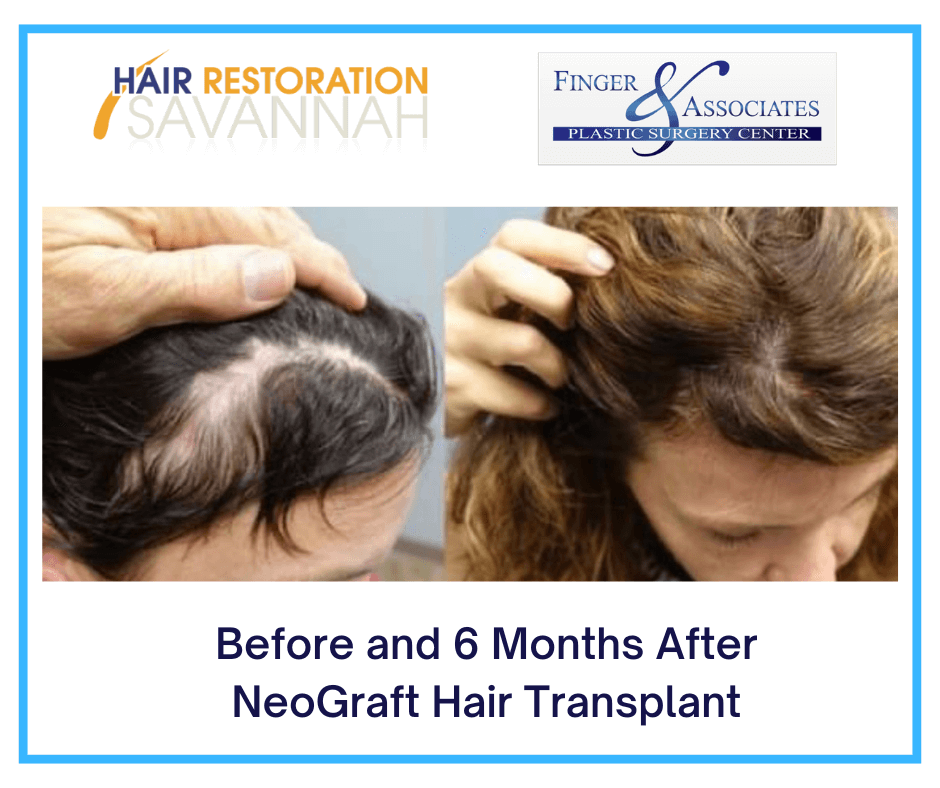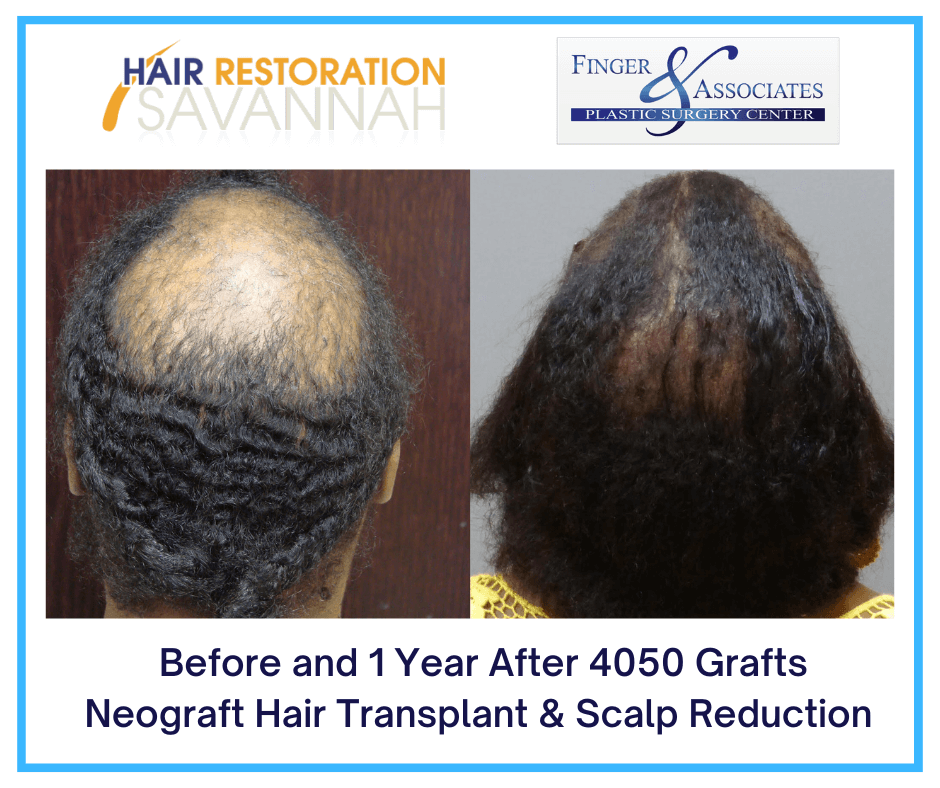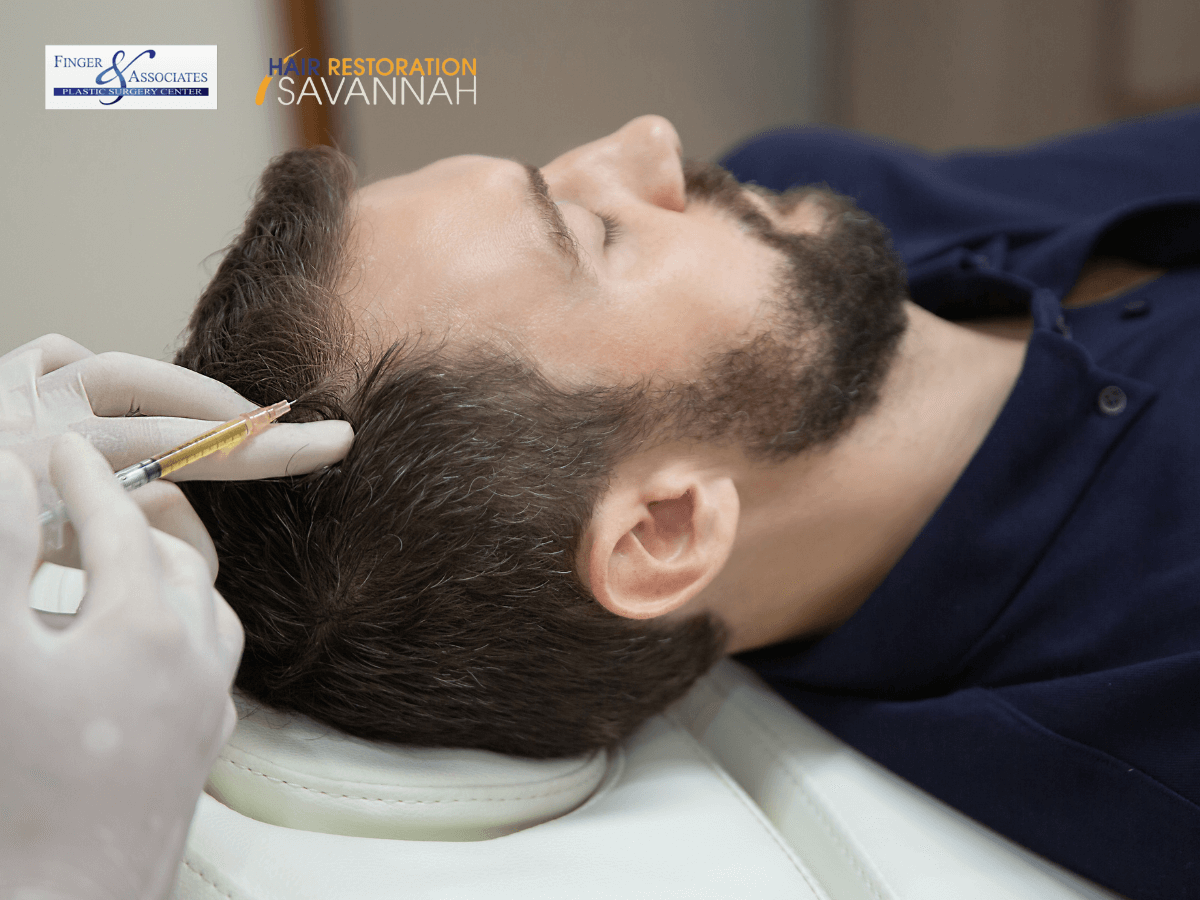
Understanding Hair Loss, Hair Restoration, and Realistic Expectations
By Dr. E. Ronald Finger | Hair Restoration Savannah
Hair loss is a personal journey. Whether you are seeing thinning at the crown, a receding hairline, or general shedding across the scalp, it is frustrating. The good news is that today’s hair restoration options are better, more advanced, and more effective than ever before, both surgical and non-surgical. But it is just as important to understand what these treatments can and cannot do.
At Hair Restoration Savannah, we offer a full range of hair loss treatments, and we want every patient to walk away with two things: results and realistic expectations.
Non-Surgical Hair Restoration: Stimulating Your Own Follicles
Not every client needs hair transplant surgery. Many benefit from non-surgical methods designed to awaken weak or dormant follicles and improve the overall health of the scalp.
Platelet-Rich Plasma (PRP) Therapy
PRP uses your own blood, spun in a centrifuge to isolate growth-rich plasma, which is then injected or microneedled into areas of thinning. These platelets contain growth factors that can stimulate hair follicles back into the active growth phase, especially if they are weak but not dead.
This treatment works best when there is still some hair in the thinning area, meaning the follicle has not completely died. It is natural, safe, and effective when done in a series over several months.
Exosome Therapy
Exosomes are cell-derived messengers that trigger regenerative activity. These can be human-derived or plant-derived, and both types aim to stimulate the repair and activation of hair follicles. Think of them as a signal booster that encourages your body to get back to work.
Exosome therapy is cutting-edge and ideal for clients who want to avoid surgery or want to support results post-transplant.
Scalp Detox and Circulation Support: Keravive
A clean, healthy scalp is essential for healthy hair growth. Keravive is a specialized scalp treatment from the makers of HydraFacial. It gently exfoliates, removes buildup, unclogs pores, and improves circulation. This improves the scalp environment and prepares it for any additional treatment, whether topical or injected.
Surgical Hair Restoration: FUE and FUT
When non-surgical options are not enough, we turn to proven surgical techniques — Follicular Unit Extraction (FUE) and Follicular Unit Transplantation (FUT). Dr. Finger has over 50 years of experience as a board-certified plastic surgeon, and his surgical skill is unmatched in delivering natural-looking, long-lasting results.
FUE (Follicular Unit Extraction)
This method involves removing individual hair follicles from the donor area, typically the back of the head, and transplanting them into thinning or bald areas. It leaves tiny, round marks that are barely visible, requires no sutures, and offers a short recovery time.
FUE is ideal for patients who wear their hair short or want minimal visible scarring.
FUT (Follicular Unit Transplantation)
FUT, also called the strip method, removes a narrow strip of scalp from the donor area. The follicles are then carefully dissected and transplanted. This method often yields more grafts in a single session and is a better choice for patients needing significant coverage.
Even though it involves a linear scar, Dr. Finger specializes in scar revision and ensures the scar is as minimal and hidden as possible. His plastic surgery background gives him the precision and aesthetic experience that most hair restoration doctors simply do not have.
Expectations: The Most Important Part of Hair Restoration
Here is what every client needs to know.
Hair loss, especially male pattern baldness, is progressive. It is genetic. Even after a successful PRP treatment, an exosome series, or a hair transplant, your native hair in non-transplanted areas may continue to thin or fall out over time.
Transplanted hair is permanent it resists the effects of DHT, the hormone behind genetic hair loss. But the rest of your hair is still subject to ongoing loss. This means you may need a second or even third procedure in the future, depending on your age, rate of loss, and long-term goals.
This is not a failure of the treatment. This is simply how male and female pattern baldness works.
We believe in educating our patients so they understand that hair restoration is not always one and done. It is often a process one that may include maintenance, additional grafting later in life, or regular PRP to preserve native hair.
Why Personalization Matters
Every patient is different. That is why Dr. Finger does not take a one-size-fits-all approach. He will evaluate your scalp health, donor hair supply, hair loss pattern, age, and goals. Then, he will recommend the right path whether that is FUE, FUT, PRP, exosomes, Keravive, or a combination of therapies.
The decision between FUE and FUT depends on your needs. FUE offers minimal scarring and fast recovery. FUT provides a larger volume of grafts in one sitting and is better suited for those with advanced loss. In both cases, you can expect a natural look, because artistry is just as important as science in hair restoration.
Final Thoughts: Real Help, Real Results, Real Expectations
At Hair Restoration Savannah, we are committed to giving you the best results possible — not false hope. We combine science, experience, and artistry to deliver outcomes that look natural and age gracefully. But we are also honest.
If you are starting to lose hair, we will tell you what is worth trying and what is not. If you are a transplant candidate, we will help you understand what results to expect. And if you may need additional treatment down the road, we will say so.
Because real change starts with real talk.
Follow us on Facebook to stay updated on real patient results, treatment highlights.



